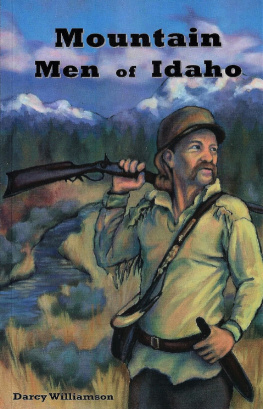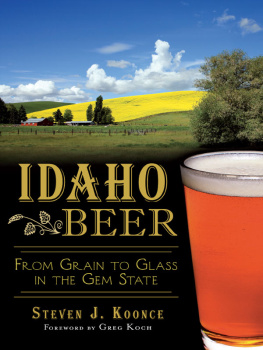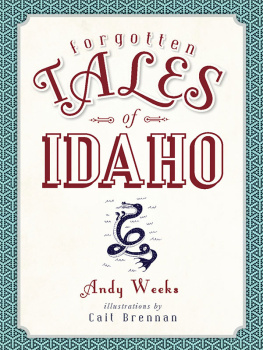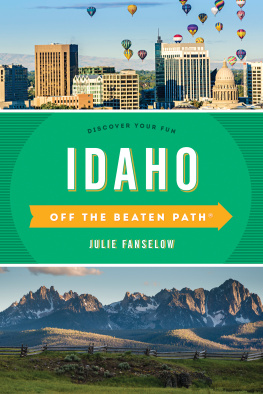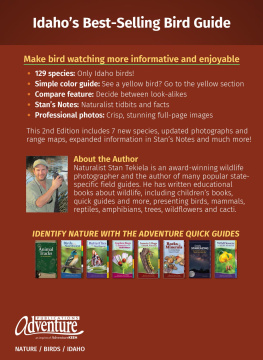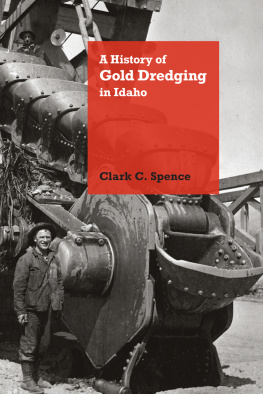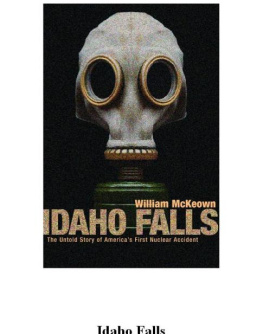P is for Potato
An Idaho Alphabet

Written by Stan and Joy Steiner and Illustrated by Jocelyn Slack

We dedicate this book to the Idaho teachers, librarians, parents,
and students who inspire others to read. We offer a special thank-you
to Marie and Roland Smith, and Ben, Lea, and Avi Steiner.
STAN and JOY

for John and Luna.
JOCELYN
A
Sikem is the Nez Perce word for horse. Although the Nez Perce were not the first tribe to have horses, they were the first to develop a breed with the qualities they needed. With such a fine horse, Nez Perce hunters traveled the long Lolo Trail to Montana for a yearly bison hunt. At full gallop, warriors shot their arrows with amazing accuracy while hanging beneath the neck of their sturdy sikem. European American settlers called the horse a Palousey pony when they saw them grazing on the rich grasses of the Palouse country. The Appaloosa is now Idahos state horse with a coat that ranges from whiteblanketed hips to full leopard spots.
The Idaho state fossil is also a horse, but it is much older than the Appaloosa. The Hagerman Horse, 3,500,000 years old, is smaller than modern horses and closely related to a zebra. The bones can be seen at Hagerman Fossil Beds National Monument, one of the best Pleistocene era fossil sites in the world.
A is for Appaloosa steed, Idahos own magnificent breed, developed by the Nez Perce tribe, a horse of intelligence, beauty, and speed.

B
Boise has been known as the city of trees since the days of the French trappers. The city was built around the Boise River, where tall, shady cottonwood trees were a welcome sight for trappers and pioneers crossing Idahos desert. City fathers began a tradition of planting trees which continues as an urban forestry program. Boise is a beautiful state capital with bustling city life, yet plenty of open space for hiking and biking. There is a zoo, art exhibits and performances, ice hockey and baseball teams, and a thriving university. In spite of all the city activity, the Boise River flows calmly past, providing a home for bald eagles, great blue herons, and a place to quietly fish or float in an old inner tube.
Our capitol building is the only one in the United States heated by geothermal energy. Naturally hot water is piped from deep underground to the capitol, completed in 1920. Geothermal energy is an inexpensive way to heat a large space.
B is for Boise, city of trees, the capital of Idaho.
A river runs through the middle of town, where herons go fishing with hardly a sound.

C
Craters of the Moon is really quite young in geological years. A large crack opened in the Earth some 2,000 years ago, forming several volcanoes which erupted and spit and flowed into many different rock shapes. Ancient people came to the lava flows to find shiny black tachylite rock for making arrow points. Todays visitors can hike and explore the formations and lava tunnels. Pahoehoe lava is smooth and ropey, but watch out for Aa; its jagged and sharp on the feet!
Craters of the Moon is close to Arco, the worlds first atomic town. In 1951 the nearby National Reactor Testing Station was the first in the world to produce electricity from nuclear fission. Four years later, the lights of Arco were lit by nuclear energy alone. The testing station is now called Idaho National Engineering and Environmental Laboratory, still on the cutting edge of energy research.
C is for Craters of the Moona national monument.
It was formed by lava long ago, a land of black rock, twisted and bent.

D
It took thousands of years to form Hells Canyon. The Snake River cut into old volcanic rock between the Wallowa Mountains in Oregon and the Seven Devils in Idaho. In some places Hells Canyon is 7,900 feet, the deepest river gorge in North America. A national recreation area, visitors can boat and fish on the Snake River, explore ancient petroglyphs on the rocks, and watch for wildlife. Once Nez Perce country, this is the flood-swollen river Chief Joseph was forced to cross with his people when the U.S. Cavalry pushed them onto reservation land in 1877. Amazingly, not a person was drowned in the crossing, not even the women and children, who floated swiftly to the far shore in their animal skin boats.
D is also for dunes made of sand. Bruneau Sand Dunes State Park, near Mountain Home, is a great place to camp and play. Visitors tumble and sled on the dune by day and watch stars from the remarkable observatory by night.
D is the Deepest river gorge.
Hells Canyon was formed many years ago.
The mighty Snake River flooded and flowed, and wore down the rock far below.

E
The Idaho state seal is the only one in the United States designed by a woman. Emma Edwards, a newcomer to Boise and just out of art school, entered a state-sponsored contest for the Idaho seal. Her design was unanimously chosen as the favorite. Miss Edwards was awarded 100 in prize money and her design was adopted by the Idaho state legislature in 1891.
The Idaho state seal is lettered with the motto Esto Perpetua, the hope that the beautiful lands of Idaho will last forever. Our state flag also carries the state seal set on a blue background.
E is for Emma Edwards Green, who went to school to be an artist.
She painted the seal for the 43rd state, with a river and mountain, miner and harvest.

F
Idaho has the largest stand of western white pine in the nation. It is no wonder that it was chosen as the state tree! Idaho has 21 million acres of national forest. Also growing in the forests are ponderosa pine, spruce, Douglas fir, and white fir. These forests provide a home to many animals, but the lands are also used for mining, logging, recreation, and watershed protection.
Devoto Memorial Cedar Grove and Hobo Cedar Grove Botanical Area are protected forests growing in moist areas of northern Idaho. The majestic trees in these forests are 1,000 years old, but there are others in Idaho which are older. Growing in pockets of deep ash soil which drifted into Idaho from ancient volcanic eruptions are trees which sprouted 3,000 years ago. Fragrant and peaceful, these old cedar trees urge us to breathe deeply, leave our cares behind, and take good care of our beautiful earth.
Bristly branches, towering trees, animal homes, flowing streamsfollow the path, smell the air,


